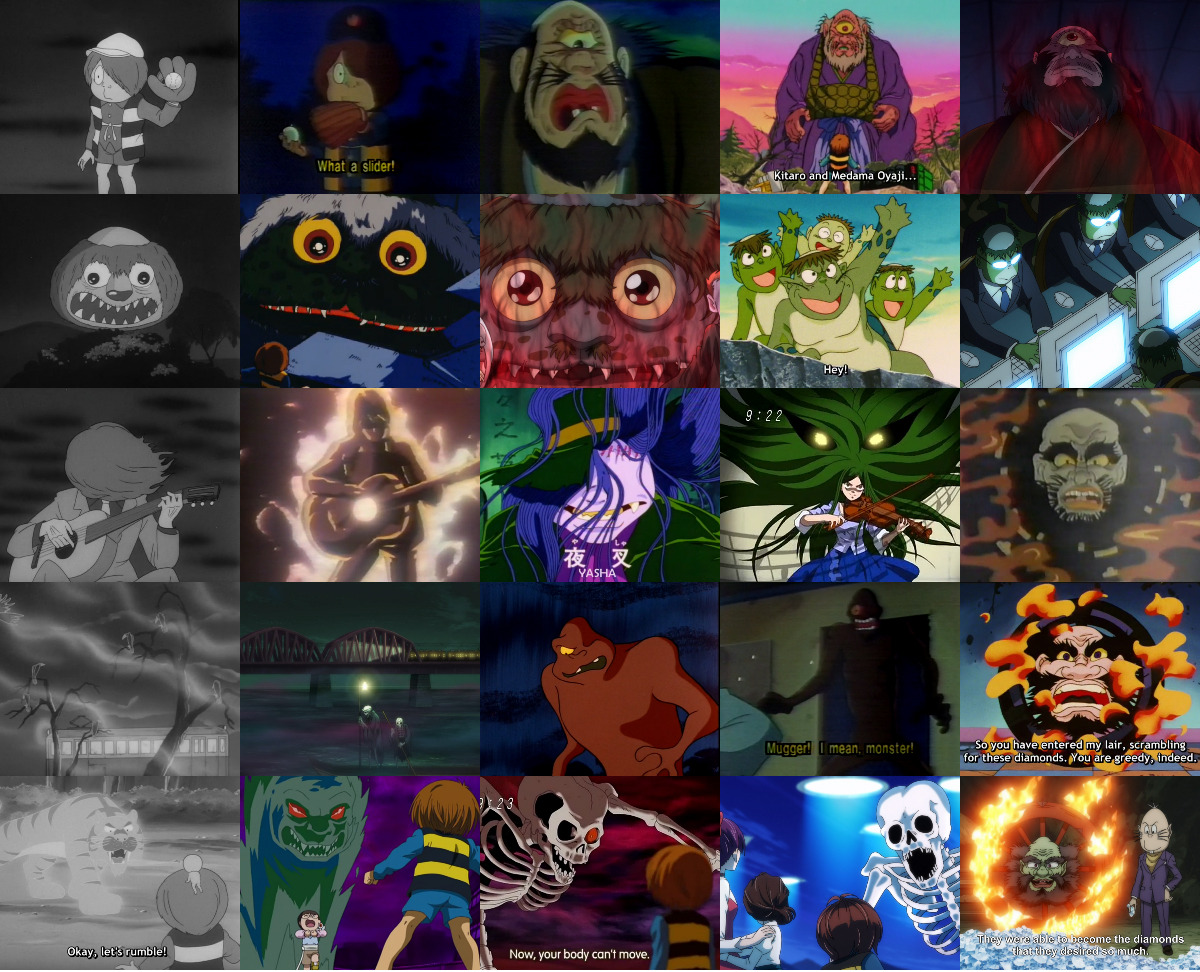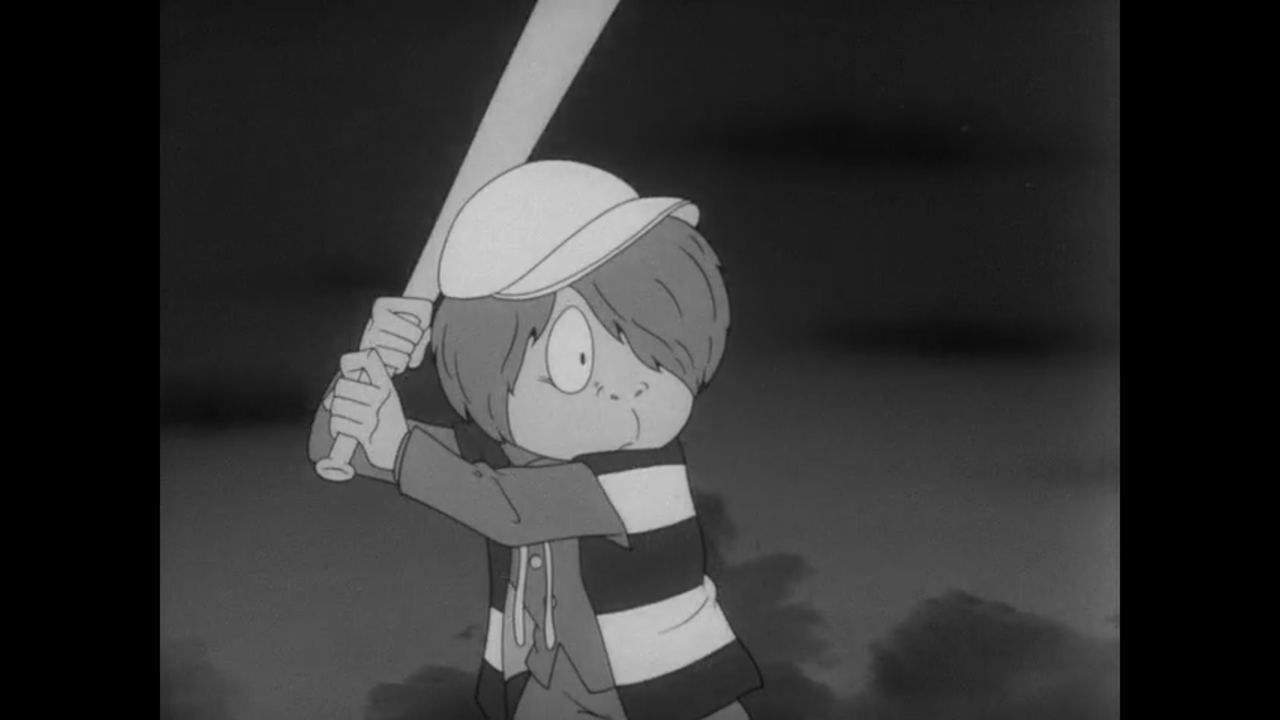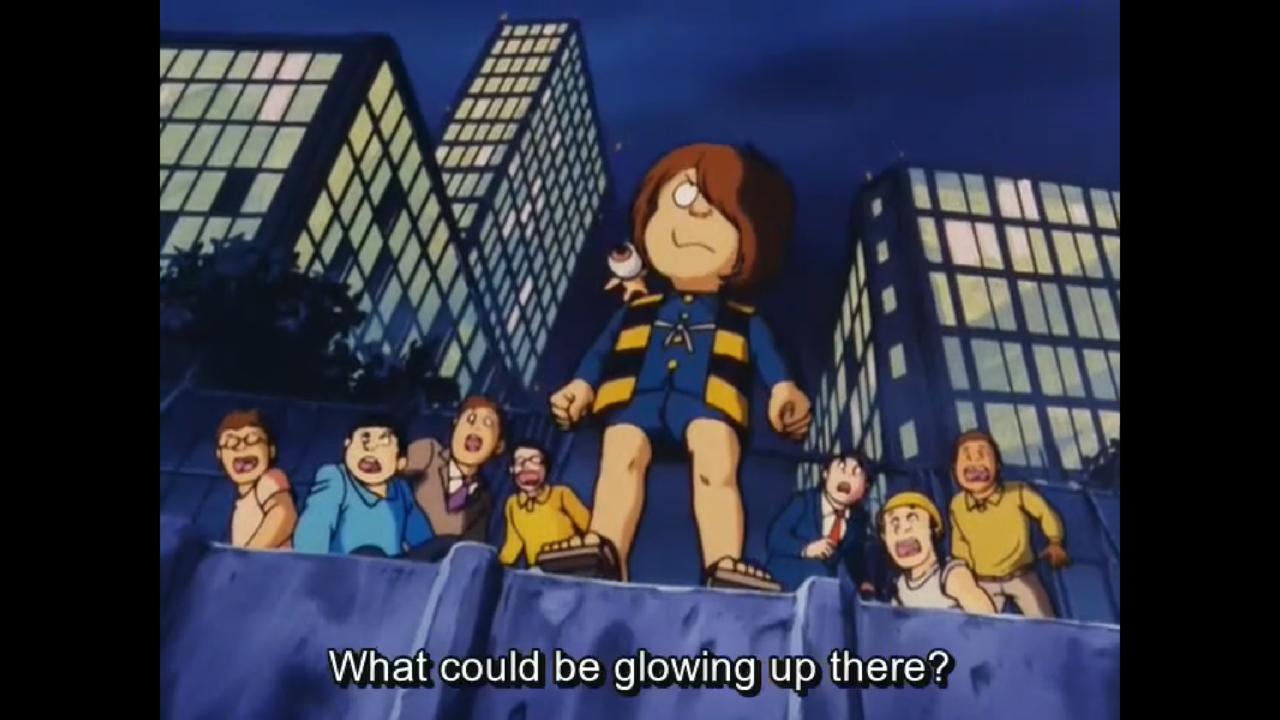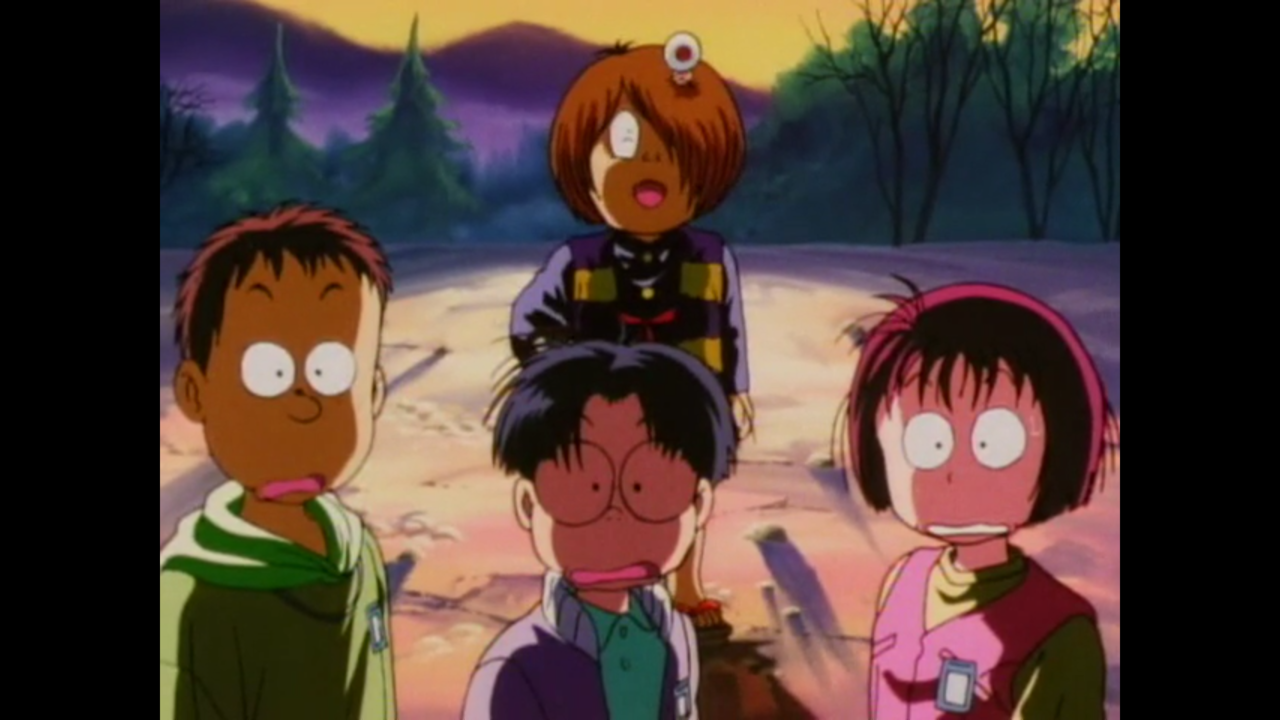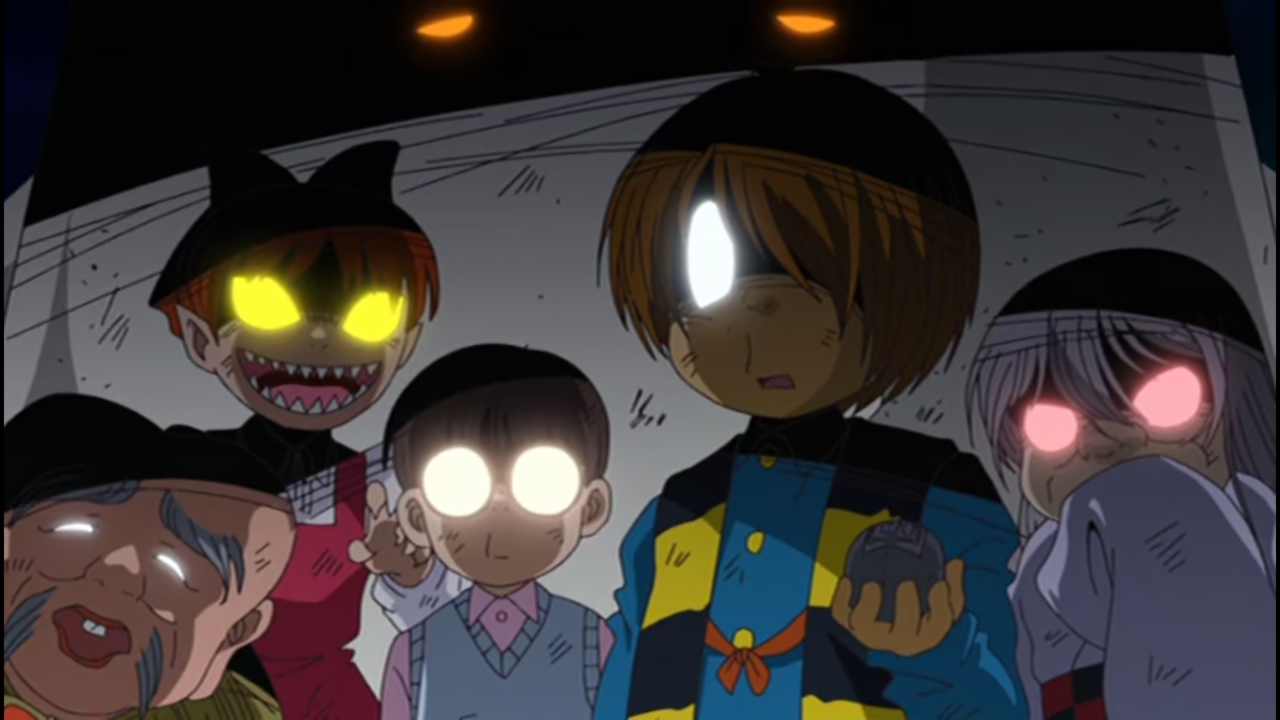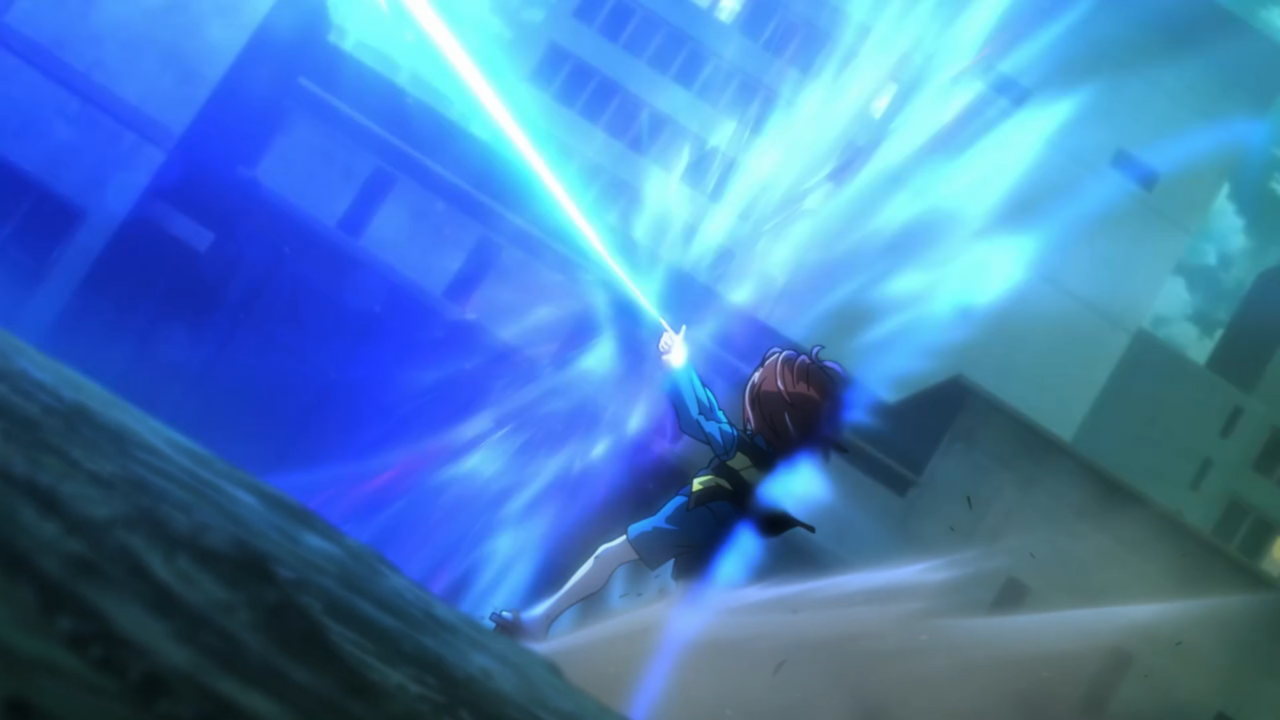This year marks the 50th anniversary of the original GeGeGe no Kitaro television animated series. This 1968 landmark series was one of the earliest horror themed anime to succeed on Japanese television during a time where the medium was just starting up, and would lead to many other similarly horror/folklore themed series; eventually creating a whole trend for television and manga that some refer to as the 1970’s Yokai Boom. The success of Kitaro and his fellow yokai friends could not be ignored and they were brought back again in 1971 right smack dab in the boom they helped started--however it wasn't until the third time Kitaro and co. reappeared in 1985 did it become apparent that these particular yokai are here to stay--as the fad they ushered in had long since died and Japan had moved on from its rekindled fascination of yokai, yet here they were, still as popular as ever on TV.
While the creation of the Kitaro characters and concepts do in fact predate this 50 year milestone by quite a few years, and the late Shigeru Mizuki’s journey from starving artist,
to little known indie creator, to a voice of a nation, is a fascinating one, I will mostly be sticking to this 5 decade milestone for the sake of this blog post. However, if you were to ask me why GeGeGe no Kitaro was able
to have the staying power that it did and how it became a staple of Japanese TV, I would have to say it’s because of the late Mizuki’s past as a starving artist. I know, I know, we’re here to mostly talk
about the franchise in terms of its television appearances and not the original kamishibai and manga origins prior, but stay with me, because I think this is important.
You see, Mizuki while a mildly popular kamishibai artist, was actually a pretty huge failure as a manga creator. His titles kept getting dropped during the rental manga days, then his later titles in manga magazines--like we have today--were always constantly dead last in the popularity rankings (any Jump fan will tell you this leads to your cancellation), and he had a reputation for being incredibly stubborn to work with. Yet despite literally being on the cusp of poverty, having to sell everything he owns, and barley being able to afford food, Mizuki did not give a shit, he drew what he wanted, despite it not catching on with an audience initially. Mizuki was greatly attached to his creations, and while he wavered here or there and worked on other books, Kitaro was where his heart was, and where he always came back to.
You see, Mizuki while a mildly popular kamishibai artist, was actually a pretty huge failure as a manga creator. His titles kept getting dropped during the rental manga days, then his later titles in manga magazines--like we have today--were always constantly dead last in the popularity rankings (any Jump fan will tell you this leads to your cancellation), and he had a reputation for being incredibly stubborn to work with. Yet despite literally being on the cusp of poverty, having to sell everything he owns, and barley being able to afford food, Mizuki did not give a shit, he drew what he wanted, despite it not catching on with an audience initially. Mizuki was greatly attached to his creations, and while he wavered here or there and worked on other books, Kitaro was where his heart was, and where he always came back to.
Kids just didn’t gravitate towards to Mizuki’s manga in the early days of his career: his unconventional artwork was considered too ugly and his scary stories were too out there--early
on Weekly Shonen Magazine even got letters complaining why Kitaro hasn't been canceled yet! But this was also Mizuki’s blessing, as industry insiders loved his work, and critics ate it up. His artwork that combined a
pulp American comics style with traditional Japanese scroll like painting was fresh, and his focus on something not adventure or super hero related was fresh. Mizuki survived these early days in large because he was able to
win these kinds of adults over, and eventually the kids that flipped through the magazines skipping his stuff slowly came around to trying it out again, maybe just a reading it a little bit here and there at first, but eventually
enjoying it. Then an opportunity of a lifetime: a TV deal! It wasn't easy, and took many years, but GeGeGe no Kitaro eventually won people over with its persistence, never succumbing to being something it wasn't.
Mizuki’s creation is something eerie yet exciting, it’s solely its own thing, its own reflection of the unique individual that was Shigeru Mizuki, and isn't something any imitator can fully mimic--and that’s
how you create staying power that goes beyond even your own life time.
My favorite thing about the now 6 different GeGeGe no Kitaro anime is that they each reflect subtle and not so subtle changes in Japan over the years. It would not be a stretch to say that Kitaro can be used as a time capsule. The original 1968 GeGeGe no Kitaro started out when Japanese TV was just getting huge, television anime as we know it only just started 3 years prior with Astro Boy, and animation companies where all rushing trying to get in on the whole television boom. This version of Kitaro is still produced in Black and White, which gives it a gorgeous and eerie look like classic horror movies, and the simpler production values while not stunning still hold up really well. Out of all the episodes from all 6 series I've seen, I’d say the original 1968 anime is the most accurate to Mizuki’s manga, with changes here or there, some padding to fill out entire episodes, and some other aspects being toned down slightly.
For the fourth series in 1996, Kitaro is reverted back to being more subdued and less hot blooded, however he was still given some occasional big fight scenes that the original in the manga could only dream of doing. Per Mizuki’s own request, a greater emphasis is put on the balance of nature and the general aesthetic of the series is inspired by the works of Studio Ghibli. The fifth series in 2007 features the most bitter rendition of Kitaro, who while still polite and trusting, was a lot more apathetic to humans who brought upon their own misfortune because of greed, not flinching to even punish some. This version of Kitaro really plays up the angle that he is an un-aging boy, with references to time passing yet Kitaro's appearance staying the same. In some cases, instead of telling a remake, certain yokai Kitaro fought in previous series are actually clearly written as sequels, with Kitaro defeating them in the past and having to fight them once again, a unique twist no other series has done yet. My favorite thing with this series though has to be that each episdoe begins with Kitaro narrating to the audience about something creepy that relates to the episode you're about to see, a la Rod Sterling. Finally we have the currently airing sixth series that just started in 2018. So far the biggest theme seems to be about modernization, and how things change over time, covering everything from smart phone overuse to viral internet videos, all the while setting up a bigger story to unfold in the background of the mostly episodic adventures.
I think the best way to really get a feel for each GeGeGe no Kitaro series though is through their first episodes. After marathoning--to the best of my abilities--a lot of the classic series
I wasn’t too familiar with, I've found myself enjoying seeing what manga chapter each will try to start on. It became some what of a game to me going back and forth through each decade to see what the earliest
episodes of each series would focus on. The original 1968 Kitaro for example starts on the Yokai Baseball chapter. While not a bad chapter at all (it’s quite morbid and funny really), it’s far from what I was expecting!
But it makes a lot of sense for its time, where Kitaro wasn't quite a sure thing, so instead of starting on a more intense episode, the series begins with a pretty tame cautionary tale about hard work and not stealing--all
while watching little boys get the crap scared out of them because they’re playing baseball against actual monsters!
The first episode in the second series from 1971 is equally as fascinating, as while it’s a pretty run-of-the-mil story about a rampaging yokai that lost its home because of human
development, it’s the little things that set it apart. The very start of the episode features Kitaro’s ultimate frenemy Nezumi Otoko desperately searching for Kitaro, giving the impression that he’s been
missing since the end of the original series. What Nezumi finds though is that Kitaro is done with fighting yokai and just wants to live a simple life writing haiku by the sea--almost as if he’s washed up and a has been
now, yet he is of course brought back into being the hero we know.
The 1985 series’ first episode starts out as bombastic as it can with the Yokai Castle manga chapter; a huge battle against 3 strong yokai that try to turn all the children of Japan
into yokai. This first episode kicks so much ass, Kitaro just wastes no time and rushes in to some great fights. What really impressed me is this usually appears a bit later in most series after we've met a couple of
Kitaro’s friends so he can have help taking on the yokai castle, but here it is right from the start! Sunakake Babaa, Konaki Jijii, and Ittan Momen do eventually come in at the end for a save but otherwise this is mostly Kitaro just
whopping butt right from the word go, complete with awesome 80’s guitar music in the background.
The first episode in the 1996 series is a lot more tame in compassion and doesn't even feature Kitaro for the first half of the episode, instead focusing on the new human characters
introduced with this iteration. Of course when things finally go bad Kitaro makes his appearance and rescues everyone. The environmental message is clear right from the beginning since it’s that darn evil construction
company that let out the yokai of this episode and over all everything is much slower paced and more reserved compared to the boisterous 1985 series’ beginning. That's not to say there isn't a good fight at the end though, but the atmosphere of a quaint town in the 90's is the most prevalent feeling.
GeGeGe no Kitaro’s 2007 series starts with a first episode that shows Kitaro’s more bitter side as three dumb kids disturb a shrine and let out a yokai--it's up to Kitaro to bail
them out. It’s not unusual in any Kitaro series for him to have to save stupid kids, (I mean this is a thing) but I do find it somewhat fitting that the series with the most bitter Kitaro started with kids committing property damage for funsies and then were too headstrong to send for help most of the episode. This episode is unfortunately a bit of a mess however, as much of it is dedicated to shoehorning in every major character in the series, which makes it overly stuffed, and overall the yokai of the week was far from that intimidating to really call for every member of Kitaro's group to be present. This does sort of tie into an emphasis that the 2007 series had on showing tons of yokai and their daily lives though since in this series all the yokai live together in their own city.
Finally we have the current series running now, with its first episode also having some really dumb kids in it, but this time done much better. As it turns out a seal was removed unleashing
a yokai all because of a dumb vlogger causing trouble for a YouTube video (*cough**cough*) The vampire tree made for some really great visuals in this episode, and a lot of time is dedicated explaining both the new human heroine
Mana and our favorite old buddy Kitaro’s personalities and back stories. You really get to know both pretty well in this episode, and it ends with great set up for the original main villain created for this series that
has been subtly building up over the course of the show ever since.
Overall, after watching so much GeGeGe no Kitaro I really gained a greater appreciation for the franchise as a whole. Seeing how much it reflects each decade since its original airing is
really fun, and trying to find which series you like the most is a great challenge. I still just can’t decide! I love the currently modernized version of Kitaro running on TV right now, it’s easily the best animation
and presentation the series has ever had (are we sure this is the same Toei we've always known?) and never talks down to its children audience, but I also feel like the 1968 Kitaro series has the perfect atmosphere and
aesthetic that none of the other series have been able to match! Then there’s the 1985 series that really makes my blood boil with its incredibly 80’s rock ‘n roll soundtrack and awesome action. I’m
not sure if I’ll ever be able to pick just one! Do you have a favorite GeGeGe no Kitaro? Let’s hear it.



